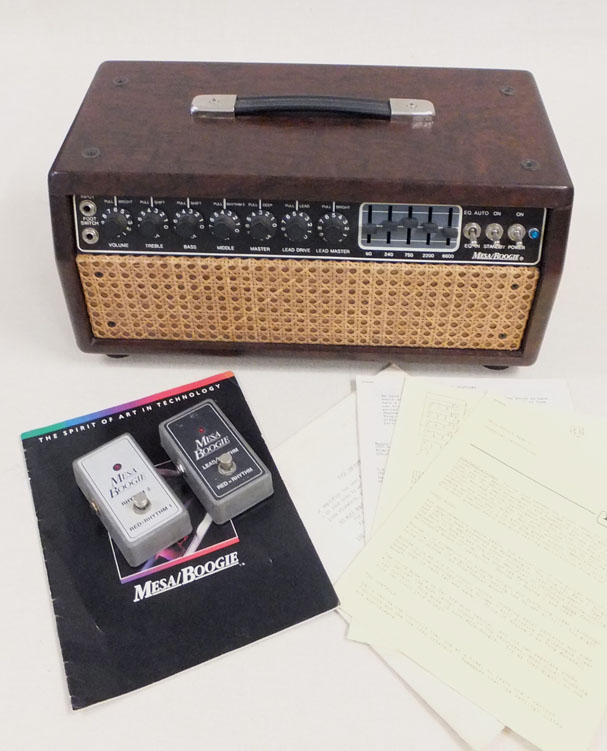Description
The Gallery Great Guitars Australia – www.greatguitars.com.au
|
1986 Vintage MESA BOOGIE Mark 111 (3) 1986 Simul-Class Rare, Collectable. Wicker front. 60/100W Please read notes to the right in this description. SOLD
|
This is the “Class A/Simul-Class” switch or the “60/100” watt switch, depending on amplifier type. But the unique way the system is wired allows you to achieve a much greater degree of power tube distortion than with most other amplifiers … and it is still very loud! In Class A, only the outside (outer left & outer right) pair of tubes – the EL-34’s will be on. The inner pair – which are 6L6’s – will also be turned on when the switch is in the Simul-Class position. In addition to this obvious difference, the biasing and control circuitry of the socket pairs are radically different … and this is the heart of the now famous (and patented) Simul-Class circuitry. It is worth noting that almost all of the major players who have gone over to Boogie have chosen the Simul-Class power design!
Mark IIIThe Mark III was launched by Mesa/Boogie in 1985. It introduced a third channel, a “crunch” rhythm sound right in between the rhythm and lead channels. This amp has a dual footswitch system: one footswitch alternates between the current rhythm mode and the lead mode, and the other selects either the clean rhythm mode or the crunch rhythm mode. The two rhythm modes share all of their controls, while the lead mode only shares the rhythm modes’ tone stack, featuring independent gain and master volume controls. The physical switch for the crunch rhythm mode was implemented as a push/pull switch above the Middle frequency control. Most Mark III’s have presence and reverb on the back (except for long chassis’) unless not desired by the buyer; Graphic EQ was also optional all in either head or combo format. The Mark III went through multiple revisions, similar to the Mark II. Each revision had a slightly different voicing, but identical functionality. Non-Simul-class versions of the Mark III came in either 60w RMS with two 6L6s or 60w/100w with four 6L6s in the power section. Mark III’s contain either four or five 12AX7 tubes in the pre-amp section, depending on if they have the reverb option. Simul-class Mark IIIs usually contain two 6L6s in the inner sockets and two EL34s in the outer sockets for 15w/75w use. Purple Stripe (1986)The second revision was the “Purple Stripe” Mark III, which featured a purple marker stripe above the power cord. This amplifier was identical in component values and R2 channel as the later Black Stripes, but had a lead section much closer to a IIC+
|



















